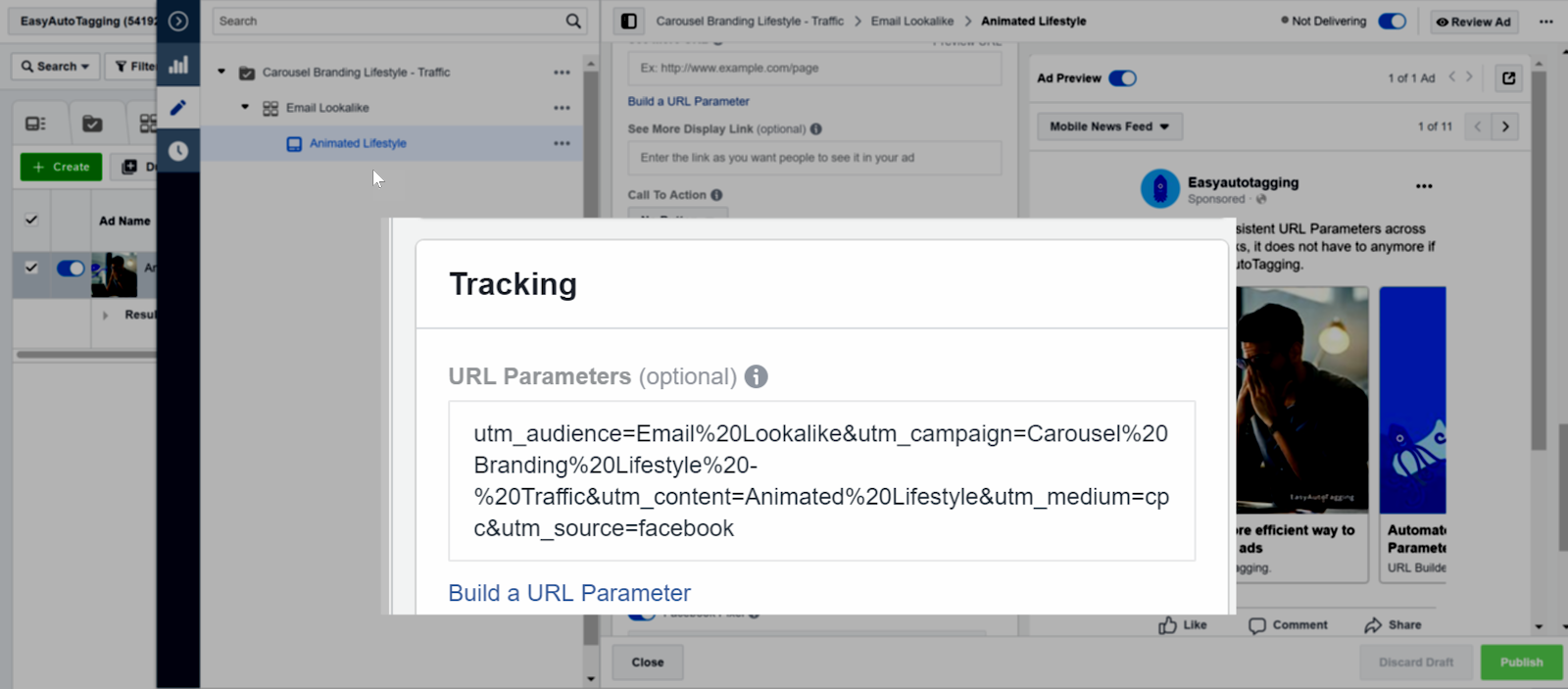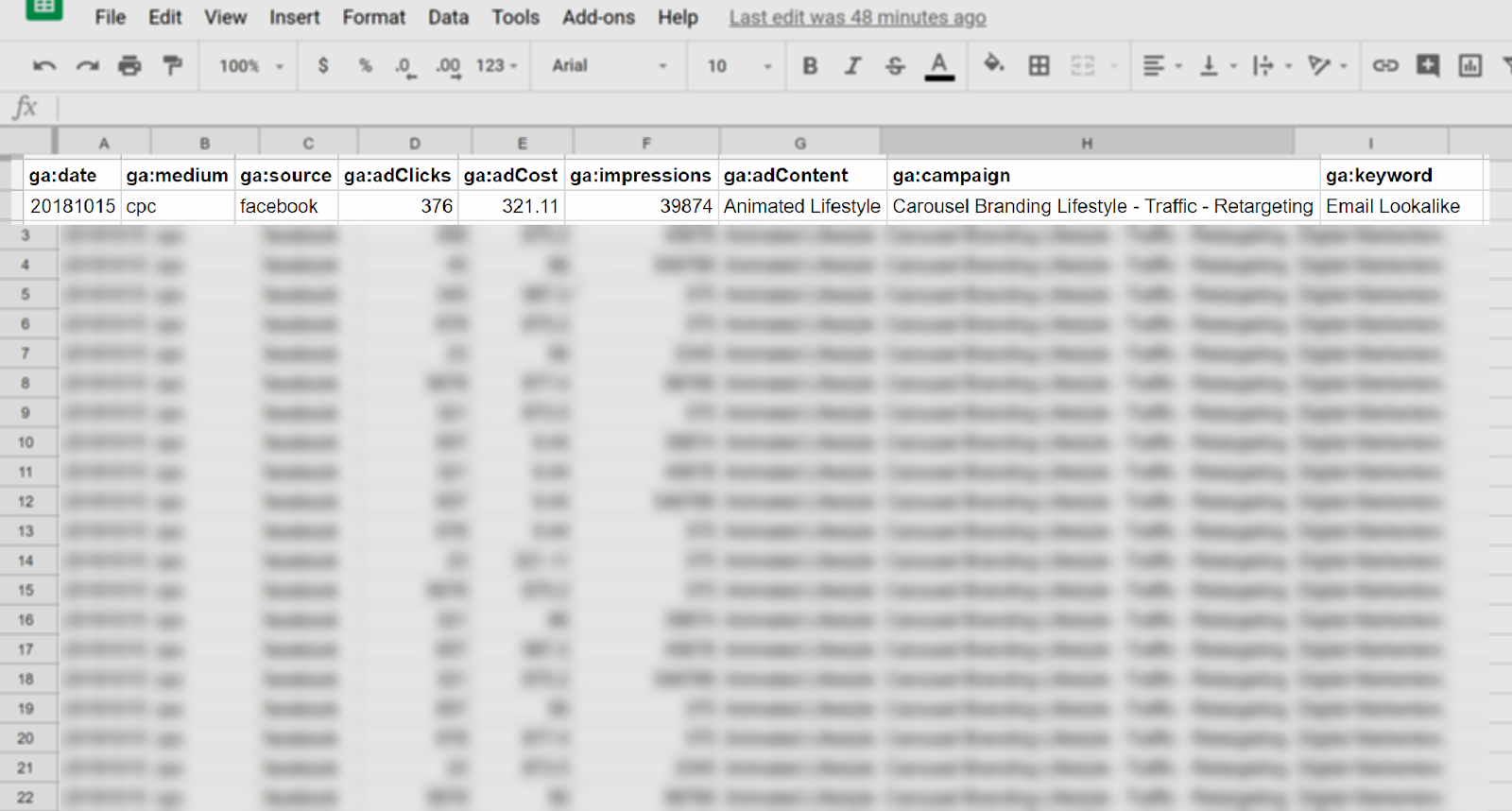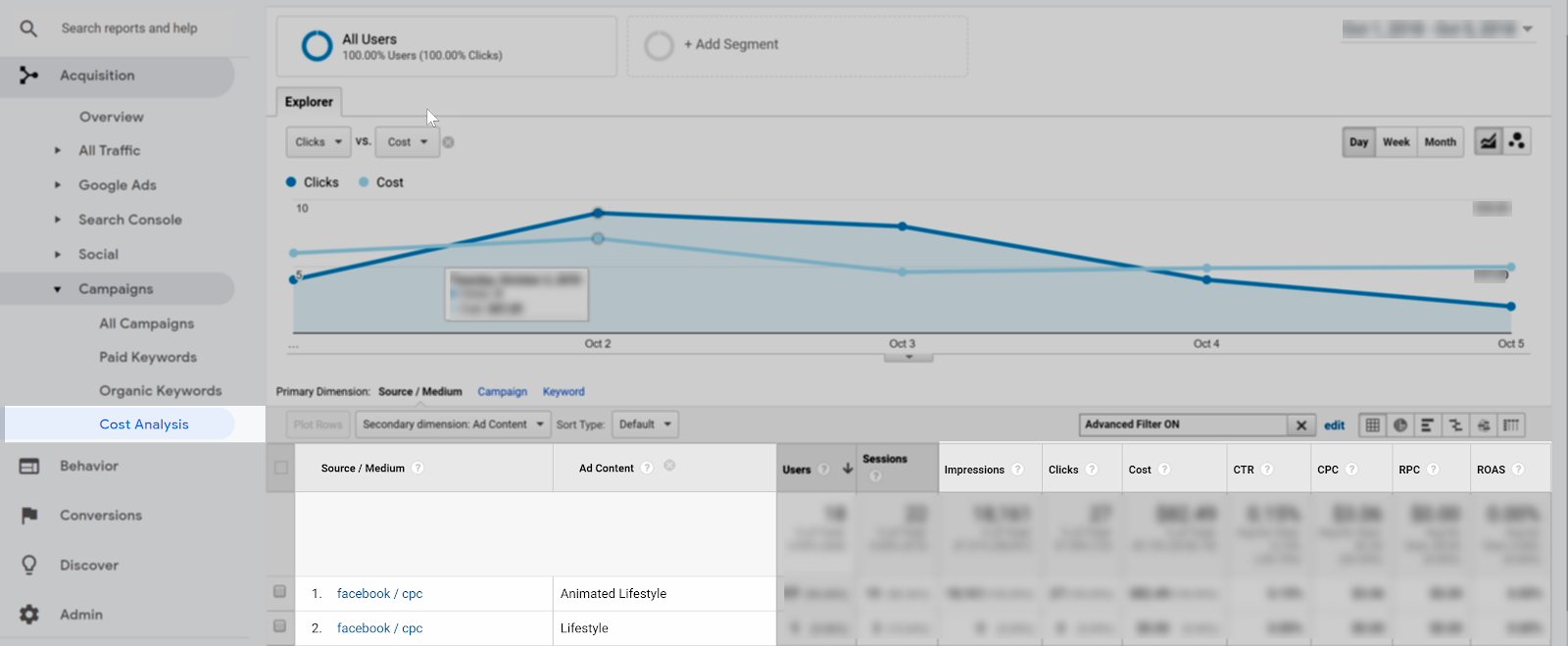What does EAT do?
Note: This is an archived page. Please reference our Knowledge Base for current support documentation.
EasyAutoTagging is a simple to use tool that automates generating Facebook Ad URL Parameters for granular campaign tagging and imports Facebook campaign cost, impression and click data into Google Analytics in a few simple steps.
Index
- EasyAutoTagging Overview
- Creating Initiatives
- Initiatives Settings – Tags
- Initiative Settings – Profiles
- Initiative Settings – Data Import
- Use Cases
Once you connect your Facebook Ad Account and EasyAutoTagging continuously scans for new Facebook Ads automatically pushing URL Parameters to the tracking field.

With import cost data enabled EasyAutoTagging performs a daily upload of Facebook campaign cost, impressions, and click data using the same parameter values pushed to the tracking field.

By leveraging EasyAutoTagging to automate the tagging and import processes, you can focus on analyzing granular blended session and cost data using the Google Analytics custom, e-commerce and cost analysis reports.

Requirements
Here are the basic requirements to get started with EasyAutoTagging:
- Active Facebook ad account with admin level ad account and page permissions
- Google Analytics account with admin permissions
- Active Cost Data Set (Learn how to create one here)
Prerequisites
To maximize the benefit of EasyAutoTagging across multiple clients, Facebook and Google Analytics accounts, and a sizable number of campaigns it is important to have a thought out and defined naming and tracking structure in place.
If you are an agency or a consultant with multiple clients, there is a good chance a naming and tracking structure is already in place. EasyAutoTagging is built to be flexible so that you can integrate its automation benefits into your existing workflow.
Things to keep in mind
Parameters should be clearly defined at the onset of a campaign since you cannot retroactively change session dimension values in Google Analytics.
Leave a comment